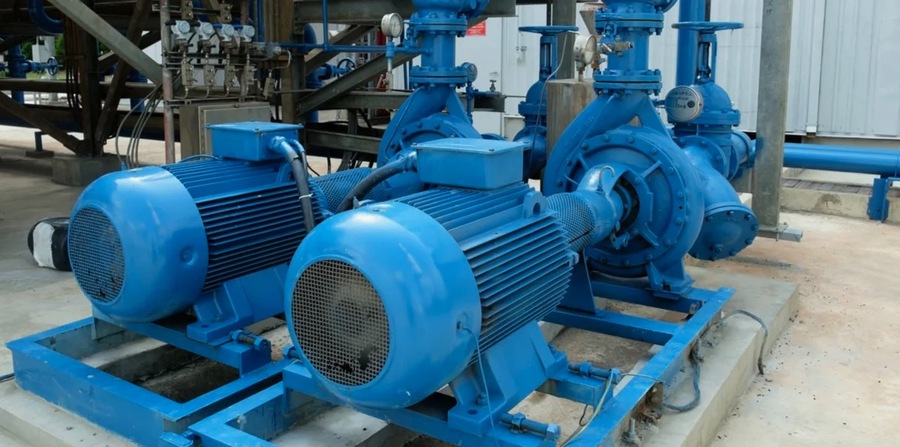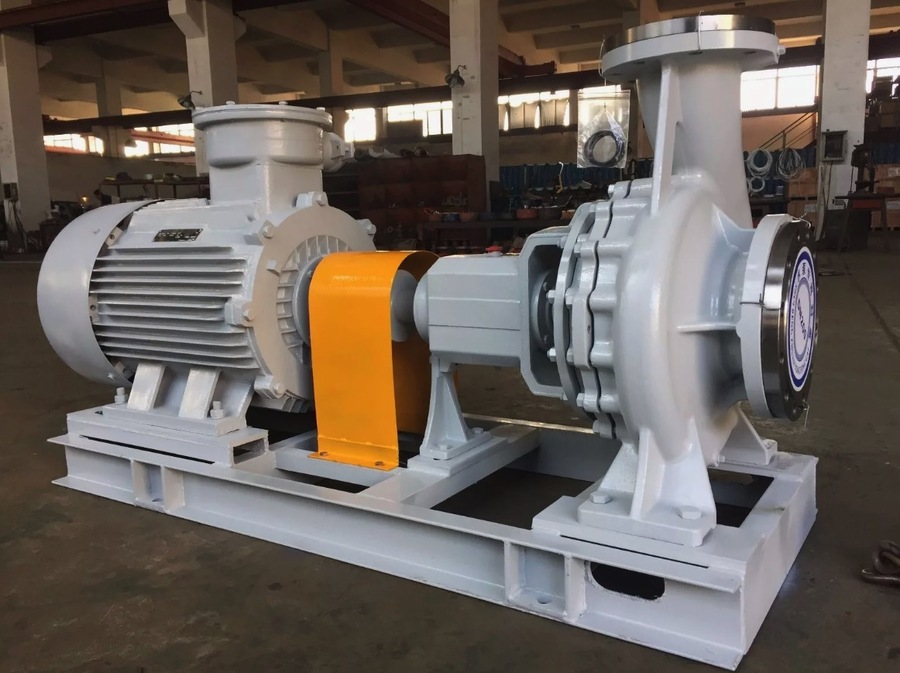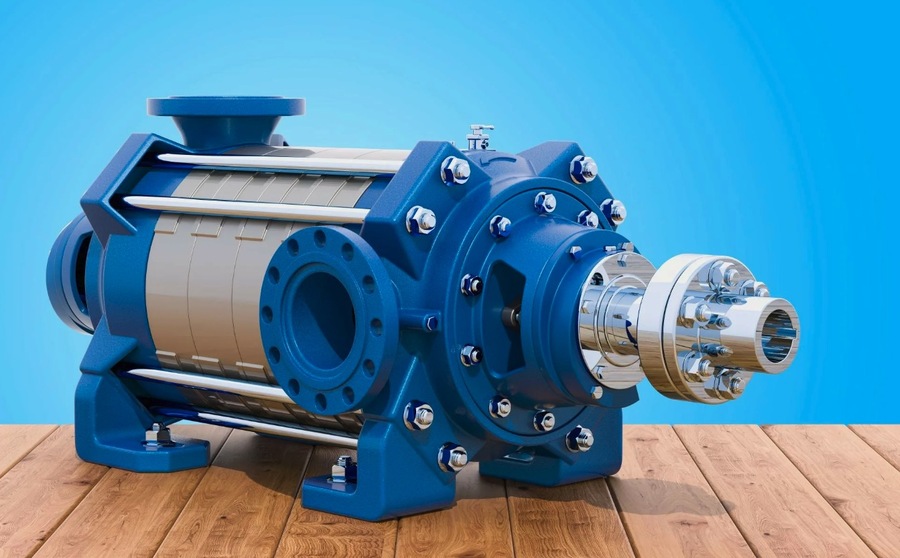Introduction to Pumps
A pump is a hydraulic machine that converts the mechanical energy of a drive motor or muscle energy (in hand pumps) into the energy of a liquid flow. Pumps serve to move liquids and create pressure, accommodating a variety of substances including mechanical mixtures of liquid with solid and colloidal substances or liquefied gases. The movement of liquid is driven by the pressure difference between the pump outlet and the connected pipeline. Pumps are essential in numerous applications, from domestic water supply to industrial processes, making them a cornerstone of modern infrastructure. If you have a pump failure, please contact Al Ghaima Engineering Company LLC for expert assistance.
Early Innovations and Ancient Developments
The history of the pump dates back to ancient times, with the earliest attempts at creating a water supply system emerging around the 5th century BC. Civilizations recognized the need to transport water from sources to their communities. One of the earliest forms of pumps, known as chain pumps, appeared around 1700 BC. These devices consisted of chains with attached buckets, which were used to draw water from deep wells. For instance, in Cairo, a deep well (91.5 m) utilized such a pump to retrieve water. The ingenuity of these early designs highlights the importance of water management in ancient societies.
One notable ancient invention was by the Greek mechanic Ctesibius, who developed a pump for fire extinguishing. This invention was later described by the Alexandrian scientist Heron in the first century BC. Ctesibius’s pump was a significant advancement in firefighting technology, showcasing the early understanding of fluid dynamics. Additionally, the renowned Archimedes invented screws in the same era to achieve a smooth and uninterrupted flow of liquid. The Archimedean screw is still used today for various applications, demonstrating the enduring impact of these early innovations.

Advancements in the 18th and 19th Centuries
A significant leap in pump development occurred at the end of the 18th century with the use of metal in piston pump construction and the introduction of steam engine drives. The first balance pump, known as the Newcomen apparatus, emerged during this period. The Newcomen engine was pivotal in the early industrial revolution, providing a reliable means to pump water from mines and paving the way for more advanced steam-driven pumps.
In the 1840s and 1850s, American inventor Henry Worthington designed steam pumps with one and two cylinders, eliminating the need for a balance drive. This innovation marked a pivotal advancement in pump technology, making steam pumps more efficient and practical for a wide range of industrial applications. Worthington’s designs were crucial in the development of modern steam pumping systems, influencing future engineering practices.
The concept of using centrifugal forces to move liquid mediums originated with Leonardo da Vinci in the 15th century. The prototype of the rotary pump, considered to be Ramelli’s plate apparatus, was invented around 1588. This early rotary pump design laid the groundwork for the centrifugal pumps that would become prevalent in the 19th century. In 1624, Isaac Leirchon described a two-rotor rotary pump unit, a precursor to modern gear pumps. Subsequently, various types of rotary pumps emerged, each improving upon previous designs to handle different fluids and pressures.
The Advent of Modern Pumps
With the advent of high-speed heat and electric motors at the end of the 19th century, centrifugal pump units became widespread. In 1838, Russian scientist A. Sablukov built a single-stage centrifugal unit based on a fan he had developed. Sablukov’s design was one of the first practical implementations of a centrifugal pump, demonstrating the efficiency and reliability of this technology. In 1846, American engineer Johnson developed a horizontal multistage pump, followed by a similar unit in Great Britain in 1851, known as the Guinn pump, which was later improved by O. Reynolds. These multistage designs allowed for higher pressures and greater efficiency, expanding the applications of centrifugal pumps.
The development of heat pumps is credited to English engineer William Thompson, who introduced a system called a “heat multiplier” in 1852. Though initially theoretical, the concept was further developed by followers. The first practical heat pump installation was carried out by Austrian Peter von Rittinger in 1855. Rittinger’s heat pump utilized mechanical work to transfer heat from one location to another, a principle that is fundamental to modern refrigeration and heating systems.
In 1899, Russian engineer V. Pushechnikov invented a vertical multistage pump for boreholes. Built at a French factory, this pump was used to supply water to Moscow, delivering 200 cubic meters per hour with an efficiency of 70%. Pushechnikov’s design was a significant advancement in vertical pumping technology, providing a reliable solution for deep well water extraction. His invention demonstrated the potential of multistage pumps to deliver high volumes of liquid over considerable heights, paving the way for modern high-rise building water supply systems.

The Role of Pumps Today
As evidenced by their historical evolution, pumps have been crucial since the inception of technical thought and remain indispensable today. Modern pumps are more diverse and technologically advanced than their ancient counterparts, requiring specialized knowledge and skills for maintenance. Pumps are used in various sectors, including water supply, wastewater management, chemical processing, oil and gas, and food production, making them vital to everyday life and industrial operations.
Summary
In the UAE, the Al Ghaima Engineering Company LLC is a leading provider of pump repair services, offering expertise in maintaining and servicing a wide range of technical devices. Their professional team ensures that pumps continue to operate efficiently, supporting various industries and household needs. By leveraging their extensive knowledge and experience, Al Ghaima Engineering Company LLC helps clients maximize the lifespan and performance of their pumping systems, ensuring reliable and cost-effective operation.
By understanding the rich history and continuous development of pumps, we can appreciate their vital role in modern technology and infrastructure. From ancient chain pumps to sophisticated centrifugal and heat pumps, the evolution of pump technology reflects humanity’s ingenuity and adaptability in addressing the challenges of fluid movement and management.

Fixie owner, vegan, ukulelist, reclaimed wood collector and doodler. Making at the fulcrum of aesthetics and function to answer design problems with honest solutions. German award-winning designer raised in Austria & currently living in New York City.
